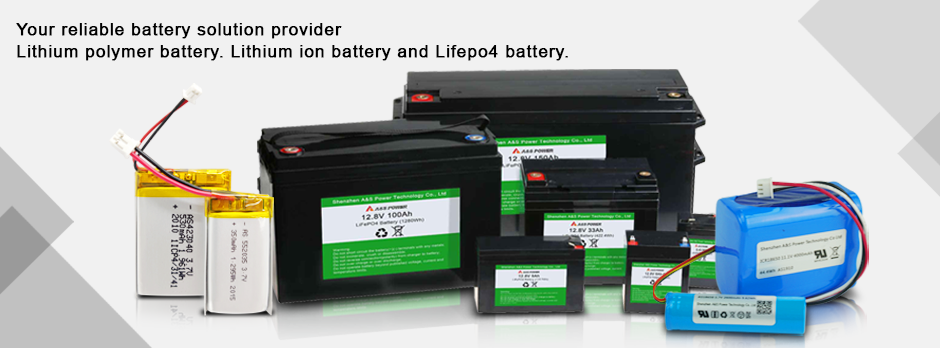Battery
Application
Hot product
Contact us
The difference between lithium ion battery and polymer lithium battery
2021-07-15
The difference between lithium ion battery and polymer lithium battery
Lithium ion battery is a kind of secondary battery (rechargeable battery), which mainly relies on the movement of lithium ions between the positive electrode and the negative electrode to work. During the charging and discharging process, Li+ intercalates and deintercalates back and forth between the two electrodes: during charging, Li+ deintercalates from the positive electrode and intercalates into the negative electrode through the electrolyte, and the negative electrode is in a lithium-rich state; the opposite is true during discharge.
Lithium polymer battery, also known as polymer lithium battery, is a kind of chemical battery. Compared with the previous battery, it has the characteristics of high energy, miniaturization and light weight. Lithium polymer batteries have ultra-thin features, and can be made into batteries of different shapes and capacities to meet the needs of some products. The theoretical minimum thickness can reach 0.5mm.
The difference between lithium ion battery and polymer lithium battery:
1. Different raw materials
The raw material of lithium ion battery is electrolyte (liquid or gel); the raw material of polymer lithium battery is electrolyte, including polymer electrolyte (solid or gel) and organic electrolyte.
2, the security is different
Lithium-ion batteries are easy to explode in a high-temperature and high-pressure environment; polymer lithium batteries use aluminum plastic film as the outer shell, and when organic electrolytes are used inside, they will not explode even if the liquid is very hot.
3, the shape is different
The polymer battery can be thinner, any area and any shape, because its electrolyte can be solid or colloidal rather than liquid. Lithium batteries use electrolyte, which requires a solid shell as a secondary package to contain the electrolyte. .
4, the battery voltage is different
Because the polymer battery uses polymer materials, it can be made into a multi-layer combination in the battery cell to achieve high voltage, and the nominal capacity of the lithium battery cell is 3.6V. If you want to achieve high voltage in actual use, you need to combine multiple The batteries are connected in series to form an ideal high-voltage working platform.
5, the manufacturing process is different
The thinner the polymer battery, the better the production, and the thicker the lithium battery, the better the production, which makes the application of lithium batteries more expandable.
6, capacity
The capacity of polymer batteries has not been effectively improved, and has been reduced compared with standard capacity lithium batteries.
Lithium ion battery is a kind of secondary battery (rechargeable battery), which mainly relies on the movement of lithium ions between the positive electrode and the negative electrode to work. During the charging and discharging process, Li+ intercalates and deintercalates back and forth between the two electrodes: during charging, Li+ deintercalates from the positive electrode and intercalates into the negative electrode through the electrolyte, and the negative electrode is in a lithium-rich state; the opposite is true during discharge.
Lithium polymer battery, also known as polymer lithium battery, is a kind of chemical battery. Compared with the previous battery, it has the characteristics of high energy, miniaturization and light weight. Lithium polymer batteries have ultra-thin features, and can be made into batteries of different shapes and capacities to meet the needs of some products. The theoretical minimum thickness can reach 0.5mm.
The difference between lithium ion battery and polymer lithium battery:
1. Different raw materials
The raw material of lithium ion battery is electrolyte (liquid or gel); the raw material of polymer lithium battery is electrolyte, including polymer electrolyte (solid or gel) and organic electrolyte.
2, the security is different
Lithium-ion batteries are easy to explode in a high-temperature and high-pressure environment; polymer lithium batteries use aluminum plastic film as the outer shell, and when organic electrolytes are used inside, they will not explode even if the liquid is very hot.
3, the shape is different
The polymer battery can be thinner, any area and any shape, because its electrolyte can be solid or colloidal rather than liquid. Lithium batteries use electrolyte, which requires a solid shell as a secondary package to contain the electrolyte. .
4, the battery voltage is different
Because the polymer battery uses polymer materials, it can be made into a multi-layer combination in the battery cell to achieve high voltage, and the nominal capacity of the lithium battery cell is 3.6V. If you want to achieve high voltage in actual use, you need to combine multiple The batteries are connected in series to form an ideal high-voltage working platform.
5, the manufacturing process is different
The thinner the polymer battery, the better the production, and the thicker the lithium battery, the better the production, which makes the application of lithium batteries more expandable.
6, capacity
The capacity of polymer batteries has not been effectively improved, and has been reduced compared with standard capacity lithium batteries.
The positive and negative materials used in polymer lithium-ion batteries are the same as liquid lithium ions. The positive electrode materials are divided into lithium cobalt oxide, lithium manganate, ternary materials and lithium iron phosphate materials. The negative electrode is graphite, and the working principle of the battery is also basic. Unanimous. The main difference between them lies in the difference in electrolytes. Liquid lithium-ion batteries use liquid electrolytes, while polymer lithium-ion batteries are replaced by solid polymer electrolytes. This polymer can be "dry" or "colloidal." Yes, most of them currently use polymer gel electrolytes.

Follow us and explore more! 👉 Facebook











